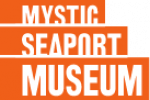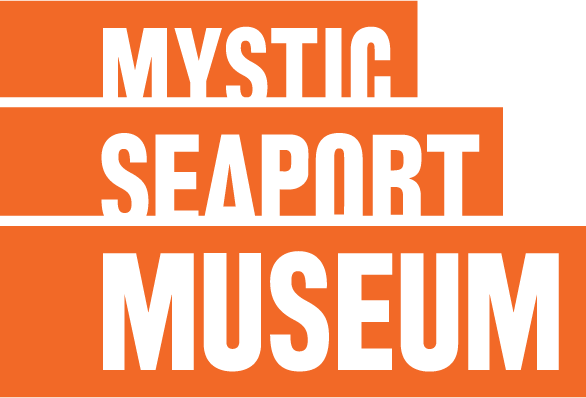
Mystic Seaport announces its lineup of new exhibitions for the 2018 calendar year, including the international debut in May of The Vikings Begin, a presentation of priceless Norse artifacts from Sweden.
The Museum will begin the year with the opening in January of a kinetic sculpture installation, Murmur: Arctic Realities, from contemporary artist John Grade that will transport visitors to the Alaskan tundra with the aid of mixed-reality technology.
Joining The Vikings Begin in May will be an exhibition featuring the Vinland Map, a document that ignited a controversy in 1965 as it purported to prove the Vikings reached the New World long before Christopher Columbus. Is the map legitimate? Experts conclude it is not, but it still has a lot to tell us about issues of authenticity and the origins of modern America.
The year concludes in November with the only American display of Death in the Ice: The Shocking Story of Franklin’s Final Expedition, an exploration of the mysterious fate of Sir John Franklin and his crew on their expedition to find the Northwest Passage across the Arctic in 1845. Artifacts recovered from the recently discovered wrecks, of the ships will be presented for the first time in this country.
“We believe this lineup of world-class exhibitions confirms a new era at Mystic Seaport, one that uses our collections and knowledge along with that of partner institutions and artists to present relevant, current themes around our timeless relationship to the sea,” said Steve White, president of Mystic Seaport. “Our goal is to bring a fresh perspective to the museum-going experience and anyone who dons a HoloLens headset to view Murmur will certainly agree that we are redefining that space.”
Murmur: Arctic Realities
January-April, 2018
Collins Gallery
 Murmur: Arctic Realities will present a groundbreaking new experience by John Grade, one of the world’s leading contemporary artists. Visitors will encounter what appears to be a natural landform – a mound intricately carved from Alaskan yellow cedar. This vast sculpture represents a pingo, a hill of ice that grows over centuries in the Arctic’s highest latitudes, then collapses, pockmarking the tundra. Grade’s work replicates exactly a pingo in Alaska’s Noatak National Preserve, mapped by the artist using photogrammetry. Visitors will not only witness the pingo’s impressive scale, but will also be able to enter inside the sculpture as its walls open and close, mimicking the pingo’s lifecycle at a time when this is accelerating due to unprecedented environmental change.
Murmur: Arctic Realities will present a groundbreaking new experience by John Grade, one of the world’s leading contemporary artists. Visitors will encounter what appears to be a natural landform – a mound intricately carved from Alaskan yellow cedar. This vast sculpture represents a pingo, a hill of ice that grows over centuries in the Arctic’s highest latitudes, then collapses, pockmarking the tundra. Grade’s work replicates exactly a pingo in Alaska’s Noatak National Preserve, mapped by the artist using photogrammetry. Visitors will not only witness the pingo’s impressive scale, but will also be able to enter inside the sculpture as its walls open and close, mimicking the pingo’s lifecycle at a time when this is accelerating due to unprecedented environmental change.
Murmur will incorporate the use of Microsoft’s HoloLens Mixed Reality technology. Grade will map fragments of Noatak’s landscape into the gallery so that visitors wearing a wireless HoloLens headset will see themselves within a holographic representation of the North. By allowing visitors in Connecticut to traverse an Alaskan marsh, Murmur will revolutionize the public’s grasp of what a museum experience can be.
The Mystic Seaport installation will be Murmur’s international debut and is made possible in collaboration with the Anchorage Museum.
The Vikings Begin: Treasures from Uppsala University, Sweden
May-September, 2018
Collins Gallery
One of the world’s finest early Viking age collections is coming to Mystic Seaport. Priceless treasures, including  helmets, shields, weapons, glass, and other artifacts are safeguarded at the Gustavianum, Uppsala University Museum in Sweden, Scandinavia’s oldest university. These collections, dating as early as the seventh century, are now the focus of a major research initiative designed to significantly advance our understanding of how the Norse culture evolved. Thematic sections on Viking warfare, trade, the Baltic Sea, a ship burial, Norse gods, and relations to other cultures will employ rare archaeological finds in the discovery of how this maritime society lived more than a millennium ago. This exhibition represents the first instance most of these artifacts will have ever left Sweden.
helmets, shields, weapons, glass, and other artifacts are safeguarded at the Gustavianum, Uppsala University Museum in Sweden, Scandinavia’s oldest university. These collections, dating as early as the seventh century, are now the focus of a major research initiative designed to significantly advance our understanding of how the Norse culture evolved. Thematic sections on Viking warfare, trade, the Baltic Sea, a ship burial, Norse gods, and relations to other cultures will employ rare archaeological finds in the discovery of how this maritime society lived more than a millennium ago. This exhibition represents the first instance most of these artifacts will have ever left Sweden.
The installation at Mystic Seaport will be the international debut of The Vikings Begin, and is made possible in collaboration with the Gustavianum, Uppsala University Museum.
The Vinland Map
May-September, 2018
R.J. Schaefer Building
 When it was first unveiled by Yale University in 1965, the Vinland Map immediately became one of the most valuable and controversial documents in the world. This parchment map was dated by Yale to about 1440 – an incendiary claim as the map depicts at its far western edge Vinland, the mysterious land discovered by explorer Leif Ericsson in about 1000, what we now know to be Newfoundland. Did Norse knowledge of the New World exist within mainland Europe before Columbus sailed? The Map suggests so. Its publication riveted a public deeply invested in the question of First Contact, and eager for evidence of an American connection to Viking history. The Map’s discovery also ignited a firestorm of debate as scholars, historians, and scientists across the globe argued over its meaning and authenticity. Today most scholars concur the Map is a forgery, which does nothing to diminish the role it has played in our national conversation about who we are and where we come from.
When it was first unveiled by Yale University in 1965, the Vinland Map immediately became one of the most valuable and controversial documents in the world. This parchment map was dated by Yale to about 1440 – an incendiary claim as the map depicts at its far western edge Vinland, the mysterious land discovered by explorer Leif Ericsson in about 1000, what we now know to be Newfoundland. Did Norse knowledge of the New World exist within mainland Europe before Columbus sailed? The Map suggests so. Its publication riveted a public deeply invested in the question of First Contact, and eager for evidence of an American connection to Viking history. The Map’s discovery also ignited a firestorm of debate as scholars, historians, and scientists across the globe argued over its meaning and authenticity. Today most scholars concur the Map is a forgery, which does nothing to diminish the role it has played in our national conversation about who we are and where we come from.
This exhibition will place the Vinland Map on display in the U.S. for the first time in more than fifty years, allowing those who have followed the saga to see its primary evidence for the first time. Mystic Seaport will engage historians, archaeologists, scientists, and other leading experts to share the Map’s story and discuss its outsized role in modern American history.
This exhibition is made possible in collaboration with the Beinecke Rare Book and Manuscript Library, Yale University.
Death in the Ice – The Mystery of the Franklin Expedition
November, 2018-April, 2019
Collins Gallery
In 1845, Sir John Franklin led the Royal Navy’s sturdiest two ships into the Arctic to great international acclaim. His mission: to discover a Northwest Passage to Asia. Franklin and his crew of 128 men were never heard from again. Thirty-seven expeditions were launched from several countries in a decades-long effort to discover the fate of Franklin’s men. Tantalizing clues, including graves, provisions, Inuit tales, and a single handwritten note told a grim story, but the men and ships were never found.
This most enduring of mysteries leapt back into the headlines in 2014 with the discovery of Franklin’s flagship, HMS Erebus, then two years later with the discovery of HMS Terror, each incredibly well preserved at depths of less than 100 feet in the Arctic Ocean. Dives aboard the wrecks are rapidly changing our understanding of what befell Franklin’s expedition.
This exhibition pulls together every strand of this epic history, including expedition materials from London, Inuit culture and knowledge that led to the wrecks’ discoveries from Canada, and artifacts raised from HMS Erebus, seen for the first time in 170 years.
This is a travelling exhibition developed by the Canadian Museum of History (Gatineau, Canada), in partnership with Parks Canada Agency and with the National Maritime Museum (London, United Kingdom), and in collaboration with the Government of Nunavut and the Inuit Heritage Trust.
Traveling Exhibitions
Peoples of the Whale: Captain George Comer and the Inuit of Hudson Bay
Embassy of Canada, Washington, D.C.
April-July, 2018
 Capt. George Comer (1858-1937) enjoyed dual careers as a successful Arctic whaling captain and an accomplished – though not formally trained – anthropologist. He is best known for his close association with the Inuit of the west coast of Hudson Bay. This exhibition explores this remarkable relationship.
Capt. George Comer (1858-1937) enjoyed dual careers as a successful Arctic whaling captain and an accomplished – though not formally trained – anthropologist. He is best known for his close association with the Inuit of the west coast of Hudson Bay. This exhibition explores this remarkable relationship.
Comer and his whaling crew fared well in the cold North, thanks in large part to the support of the Inuit, who also possessed strong whaling traditions. The Captain appreciated the remarkable ingenuity, skills, and character of his Inuit companions. They willingly shared their knowledge and helped him survive. Surrounded by one of the earth’s most harsh environments, the two groups worked together and enjoyed each other’s company.
The Inuit also supported Captain Comer’s efforts to document their rapidly changing culture, enabling him to conduct comprehensive studies of Inuit life; the first ever made in the Hudson Bay region. Today, his studies and collections provide a unique and striking record of shared legacy.
This exhibition is made possible in partnership with the Embassy of Canada and the Canadian Museum of History.


